Pool Rules: 10 Different Pool Game Rules You Can’t Miss
Pool is an exciting sports game that involves many players. Each player has a unique perspective and approach. Therefore, it requires rules that everyone must comply with. For a beginner, it is essential to go through all the basic billiards rules before practicing and joining a real competition. This article will list ten different standard pool rules for you to understand how to play pool.
8-ball pool rules
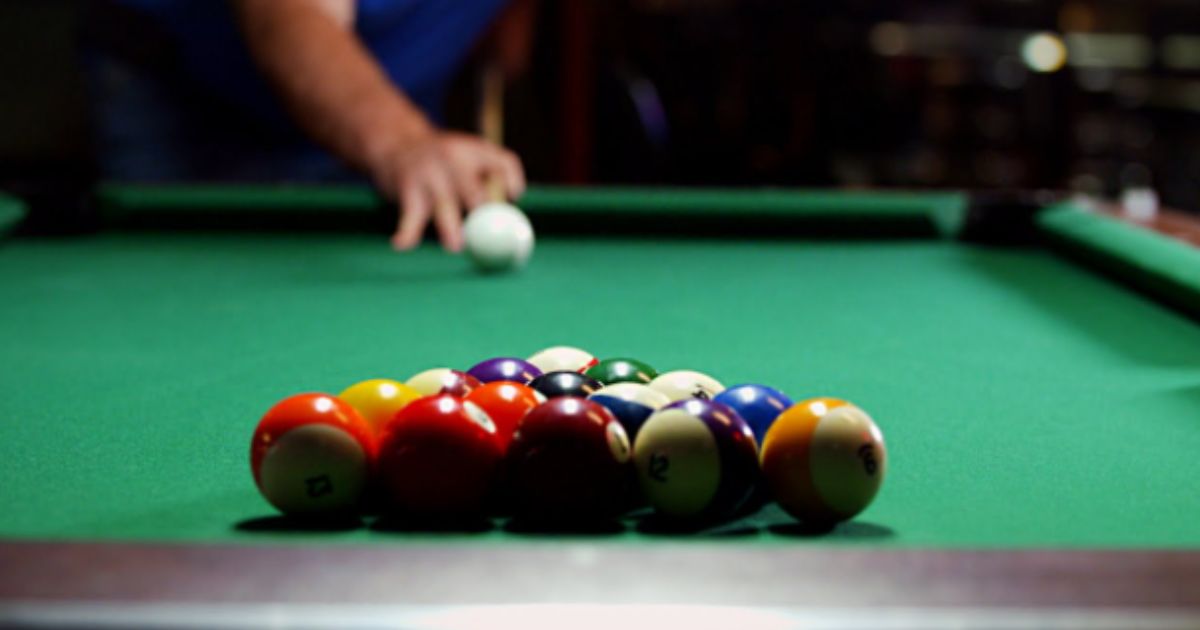
8-ball pool is the most well-known and prevalent pool game type, which is played with 15 object balls, separated into groups of solid and striped balls, and one black 8-ball. One player has to pocket all the balls with numbers 1 through 7 (solid colors), while the other has the balls with numbers 9 through 15 (stripes). The winner of the game is the player who legally pockets the 8-ball after first legally pot his ball group.
Below are the main 8-ball pool rules:
- Arrange object balls in a triangle rack at the lower end of the table, with the ball at the top of the rack resting on the foot location. The black 8-ball should be in the middle of the third row, and the other balls should be random. Then put the white ball on the table behind the service line. You can learn in detail how to rack in an 8-ball pool game here.
- The person who plays in which group is determined by the first regularly pocketed ball following the break.
- Legal pool break rules in 8-ball are that the player must strike the balls so that the cue ball doesn’t land in a pocket and four balls land on the cushions. The player may ask for a re-rack if the 8-ball is potted during the break.
- After potting an object ball, the first player must continue to strike balls from that category (stripes or solids). The opponent’s player must pot the other group.
- A player will keep making shots until they foul or miss a chance to put the ball in play. Then it is the opponent’s turn.
- Each player must pot their balls before sinking the 8-ball. Before players can make their shot, they must first decide which pocket they want to pot the 8-ball. If they fail, the opposing player will return to the table. In a case where the player places the eight ball in a pocket other than the one specified, they lose.
9 ball pool rules

9-ball is the most well-known rotation game, which requires players to hit and pocket the balls in increasing sequence. 9-ball pool uses 10 numbered balls. Both the ball’s colors and the patterns don’t matter. The ball numbers are from 1 to 9, and a white cue ball. The player who successfully pockets the 9-ball at any time during the game is declared the winner.
Find out 9-ball pool rules as follows:
- The way of racking in 9-ball pool is distinctive from 8-ball pool. We should arrange object balls in a diamond-shaped pattern, with one ball at the top and on the foot spot. Place the nine-ball in the center, and arrange the remaining balls randomly. Put the cue ball behind the head string.
- The breaker must start with the 1-ball, pocket a ball, or drive at least four numbered balls to the rail.
- You commit a foul if you drive off the table, pocket the cue ball, or fail to meet the initial break conditions. In this case, the incoming player has the cue ball in hand anywhere on the table. If the breaker causes an object ball to jump off the table, that is also a foul, and loses their turn.
- The breaker continues to shoot until he misses, fouls or wins the match if he pockets one or more balls on a legal break. The other player starts his inning and shoots until he misses, fouls, or wins if the first player fouls or misses. The game is over when the player pockets the nine ball on a legal shot. If there is a major rule violation, we will forfeit the game.
10 ball pool rules
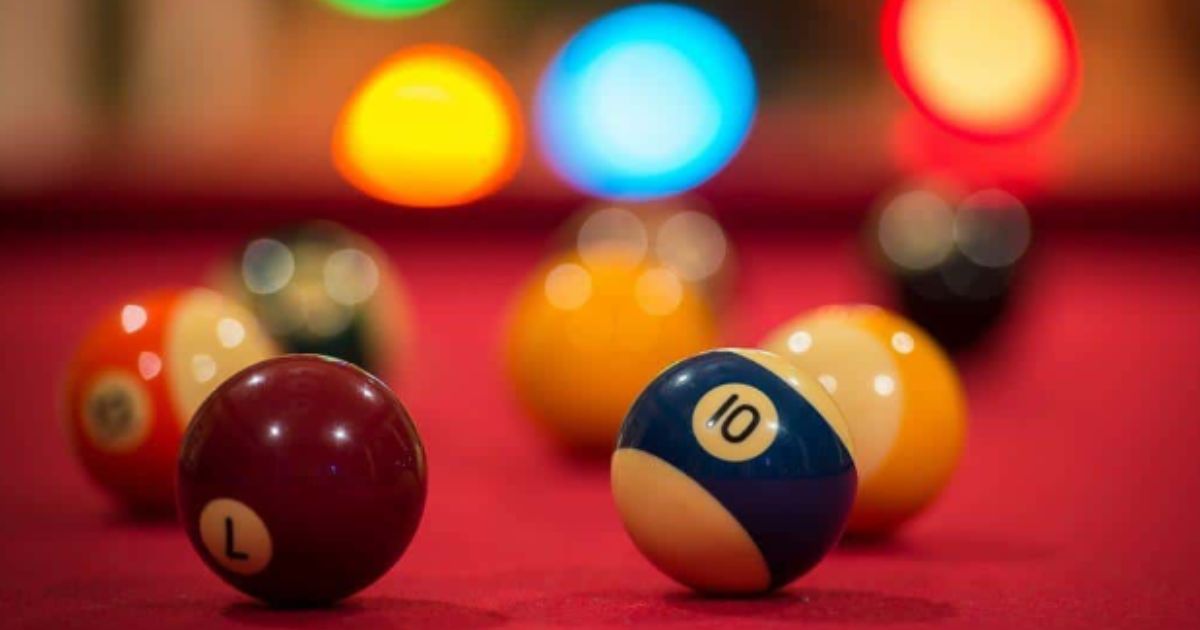
10-ball is a variation of 9-ball and a called-shot game in contrast to it. The player has to say which ball has to go in which pocket before each shot.
Discover the 10-ball rules below:
- Set up the 10-ball rack as a triangle. The 1-ball comes at the front. The 10-ball has to go in the middle. Then place other balls randomly.
- The player must always aim for the lowest ball first. If players meet this condition and pocket the called object ball into the named pocket, the turn will continue. If not, the game goes to the next player.
- It is unacceptable to pocket the 10-ball during the interval.
- You must call every strike.
- You only can call one ball per shot.
- No slop allowed
- When other balls are still on the table and players pocket the 10-ball, it is re-spotted. Rack the ball in the foot position before taking the next shot.
- A winner is the one who correctly hits the last ball on the table-the 10-ball into the named pocket.
15-ball pool rules

15-ball pool is an American pocket billiards game that originated in the nineteenth century. This pool game was developed by members of the Manhattan-based Bassford’s Billiard & Chess Rooms in the late 1830s or early 1840s.
Here are the 15 ball pool rules:
- The game uses six-pocket tables with 15 numbered object balls and one white cue ball. Rack the object balls in a triangle shape. Then put the 15-ball on the foot spot with other high-numbered balls behind. The remaining balls are in the back rows, possibly in declining order.
- A player receives the points associated with the number of balls they successfully pocketed. When there are more than two players, the objective is to score the most points possible or to score 61 points or more first (which is more than half of the sum of all the ball numbers combined) to win a frame.
- In tournament matches, people choose the winning frame from 21 frames. You could still lose a frame even if you sink twice as many balls as the winner. Each violation results in a three-point deduction and three consecutive violations result in the player losing the frame.
Bumper pool rules
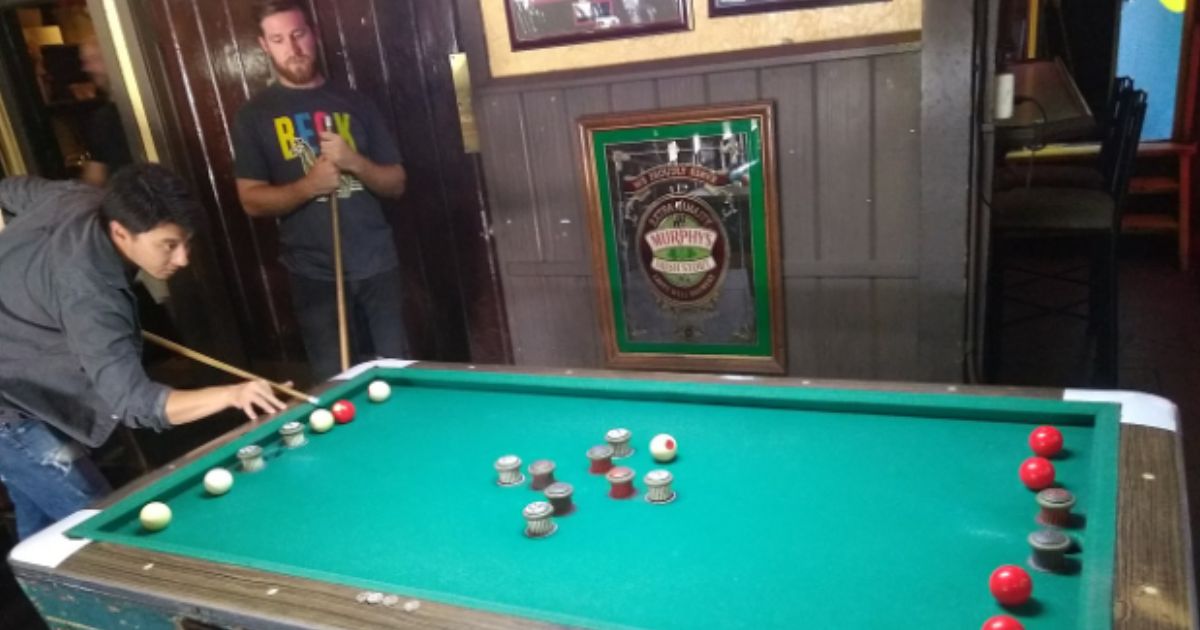
Bumper pool uses a rectangular (or occasionally octagonal) table with two pockets and a variety of fixed cushioned barriers, called bumpers, inside the table surface.
Bumper Pool (billiardworld.com)
- There are five red balls or five white balls on each side, with one marked cue ball of each color.
- Position two red balls on either side of the white pocket. Place white balls around the red pot in the same arrangement.
- Both players shoot a marked ball simultaneously, banking into or close to his color cup after hitting the side cushion. The person who plays the ball closest to or into his cup gets another shot. Players must pocket the marked cue balls first. An opponent may withdraw two of his own balls and put them in his cup if a player sinks another ball before the competitor pockets his marked ball. If the player successfully pockets both marked balls on the initial shot, he does the same with the remaining balls. They then take turns, starting with the player who shoots his ball in their pocket or closest to the pot.
- If players place their colored balls in their cups, they get another chance.
- If a player knocks a ball off the table, his opponent may place it wherever he likes and, as a bonus, take two of his balls and deposit them into his cup.
- If a player sinks one of his opponent’s balls, there is no penalty. But if the player drops his ball into the other player’s pocket or shoots one of the rival’s balls, the other player may put two balls into his pot.
- The winner is the first person or team to sink all five balls successfully. However, if a player shoots his final ball into the opposing player’s pocket, the game is forfeited.
Cutthroat pool rules

Cutthroat pool is a pool variant played with three or more people. The object is to be the last person to have their balls on the table. Sometimes it is called a three-person pool game. It is an elimination game in which the more object balls on the table, the better.
There are some general basic rules of Cutthroat Pool that you have to know before getting into the game:
- This game uses fifteen object balls with numbers ranging from 1 to 15, and the standard cue ball. At the beginning, each player will get a number representing the group of balls under their control. You’ll try to shoot balls into the pockets of the billiards table, just like you would in traditional pool.
- Take a shot at your opponent’s balls. If you can get into a pocket, you’ll be able to keep shooting until you miss or make an unlawful shot. As a result, the more you hit, the more options you’ll have for future strikes.
- Players are eliminated from the game when they have pocketed all of their balls. However, if your opponent commits a foul, you can be reinstated into the game. With some balls on the table, the objective is to be the last player standing.
- You try to hit the balls on the table that belong to your opponents.
- You can keep shooting until you create a foul, scratch or make illegal shots.
- When a player pockets all of his balls, he is out.
- After all the other players have been eliminated, the player with any balls left on the table wins.
Straight pool rules
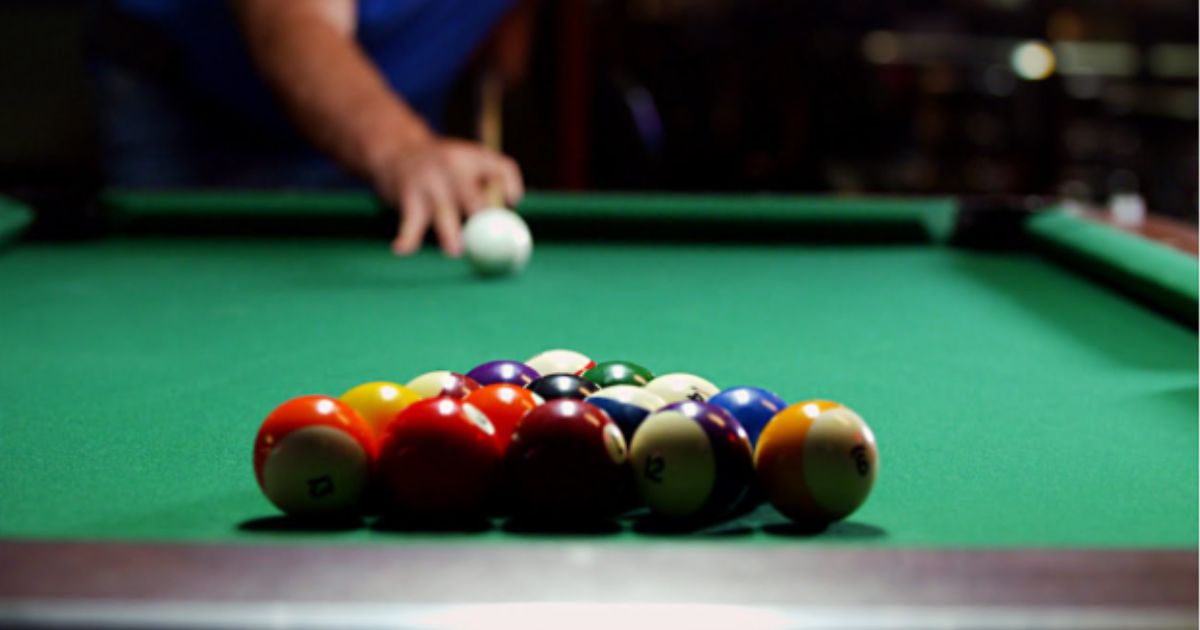
Straight pool features a white cue ball, and fifteen object balls numbered 1-15.
The goal is to accumulate a certain quantity of points (15 by default). It is worth one point if you pocket each ball without a foul.
- Rack the balls in a triangle shape, and put the cue ball behind the head string.
- The cue ball can strike any ball first. The cue ball and at least two extra balls must touch the rail, or the player must pocket a ball during the break.
- If one of these two outcomes cannot occur, a foul occurs. The special penalty for fouling during the opening break is a loss of 2 points.
- The shooter stays at the table as long as he successfully pockets called balls or until he gains the required amount of points to win the game.
- If the shooter fouls, he loses a point, and the ball goes to his opponent. A foul is committed when:
- The cue ball does not make contact with an object ball.
- The player pocketed the cue ball.
- Unless the cue ball passes the head string before that touch, the shot is a foul when the cue ball is in hand behind the head string, and the first ball it contacts is also behind the head string.
- None of the balls go to the rail after contact.
- It takes longer than 60 seconds to finish the shot.
Except for breaking fouls, a player is penalized an additional 15 points and the balls are re-racked after three consecutive fouls.
One pocket rules
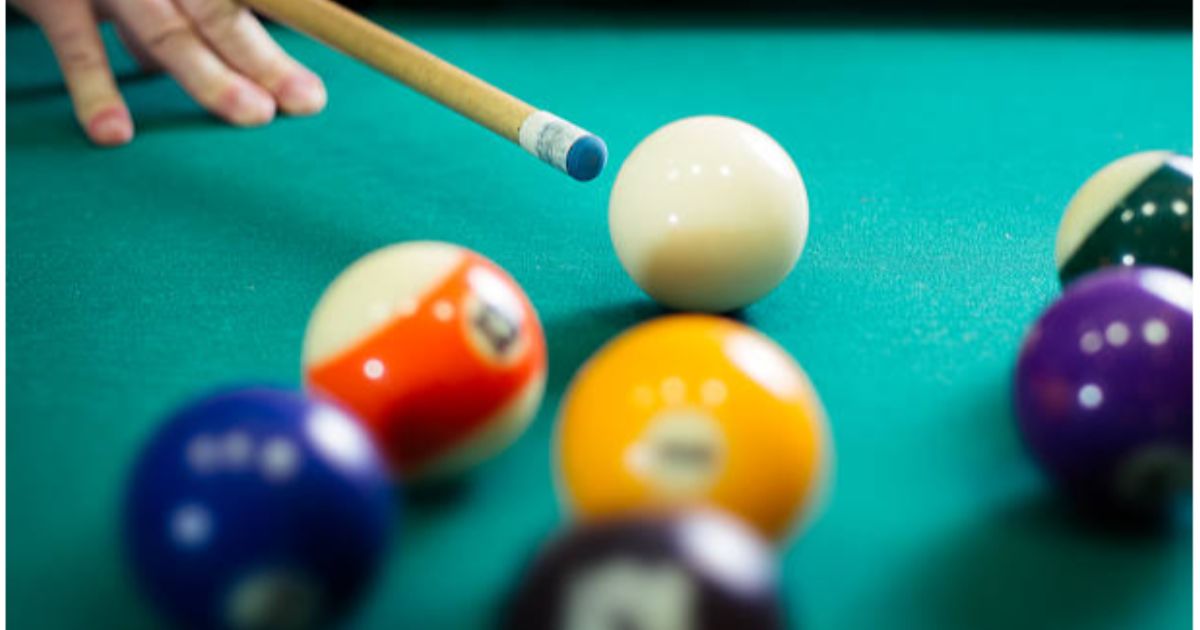
One pocket pool is a good game for two people or two teams. Each person or group can only score into one of the two corner pockets at the foot of the table. The other person or team only scores into the other corner pocket at the foot of the table. Any balls potted in one of the four neutral pockets are spotted rather than scored. The winner of the game is the first person who successfully strikes eight balls into their pocket.
- The break starts with the cue ball behind the head string. The cue ball can hit any ball in the rack directly or indirectly by first hitting a cushion. The cue ball or at least one object ball must be driven to a rail or pocketed after making contact with the rack to avoid a one-ball foul penalty. Any balls pocketed are noted, the breaker is fined one ball for the scratch, and the incoming player is given the ball in hand if there is a pocket scratch. The incoming player has to play the balls where they lie as long as a legal stroke from beneath the head string.
- A player’s round only continues as long as they legally pocket a ball or balls in their pocket without committing a foul. Although it is not a violation to put the ball in the opponent’s or a neutral pot, doing so does not allow the shooter to extend their round unless they simultaneously successfully put the ball in their pocket. Unless the player pockets the cue ball or it falls off the table during the same stroke, any balls pocketed into the opponent’s pocket, whether purposefully or accidentally, go to the opponent’s benefit.
- The player who made the winning shot is the one who pocketed both their game-winning ball and their opponent’s game-winning ball on the same legal stroke. As long as both balls fall due to the same stroke, there are no “ties,” and it is irrelevant who drops first.
- To show respect for their opponent and good sportsmanship, players can only request a time-out once each game or once during their inning. Unsportsmanlike conduct includes starting the game before the opponent returns from a legal break and leaving the field of play while the shooter is still in the middle of their inning.
Bank pool rules
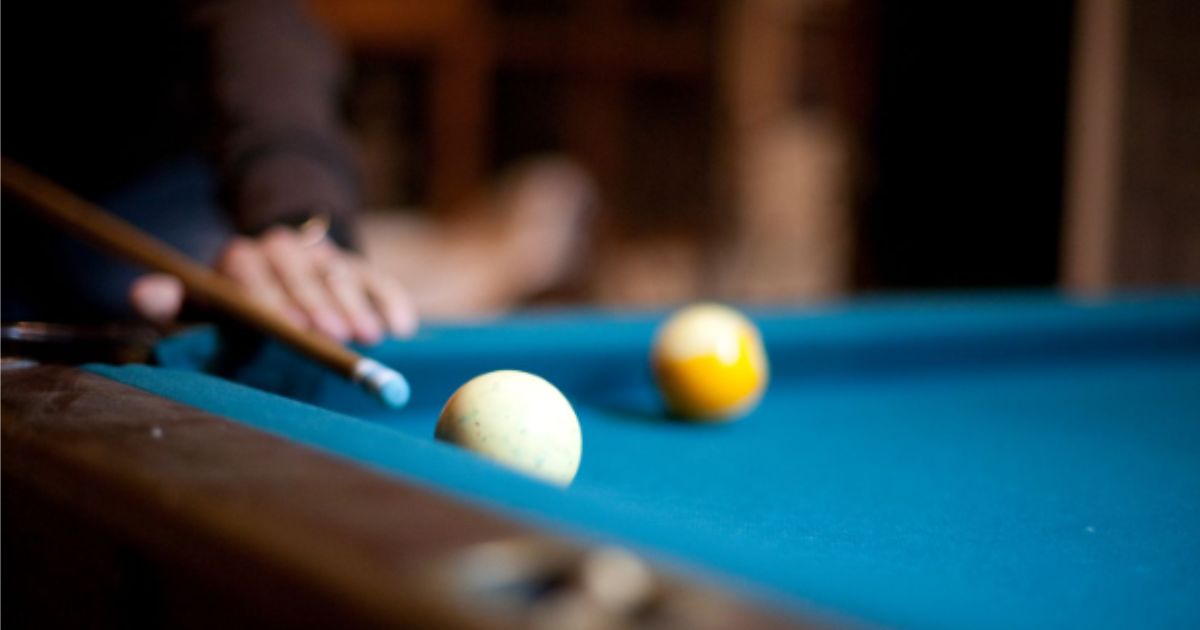
The goal of bank pool is to score more points than your opponents by exclusively making bank shots. Each player takes turns shooting any object ball into any pocket, but only legal bank shots will count. The first player to reach the necessary winning count is the winner.
- Rack all object balls tightly with the head ball placed near the foot spot. The winner of the previous rack could choose to break in the next rack. The breaker can continue their round if he pockets object balls during the break. However, in this instance, the score is not for the breaker, it is for spotting in the following round. The opposing player may choose to start play where the balls are or demand their opponent rebreak if the breaker does not comply with the legal breaking standards. Unless a foul or scrape happens, there is no additional punishment.
- Before starting a shot, the player must tell and call the ball, the planned cushion’s path, and the pocket. If the called ball arrives at the pocket through a different route, the pocketed ball does not count, and the player spots it without penalty to the shooter.
- When a player successfully pockets their called bank, their round continues. Players are only allowed to pocket one ball for each shot; any extra balls pocketed on the same stroke are held for spotting at the end of the shooter’s inning. The player’s round ends when the cue ball scratches or jumps the table, fouls happen or the player may legally fail to pocket a called or obvious bank.
- Every shot needs to be clean, which means it should not run into any other balls on the way to the called pocket.
- Combination shots are not permitted.
- There can be no carom shots; the cue ball must first make contact with the called ball.
- On its way to the pocket, the cue ball can only make one contact with the object ball. Any ball pocketed on a double kiss is spotted without additional consequences, and the player’s round is over.
Pool scratch rules
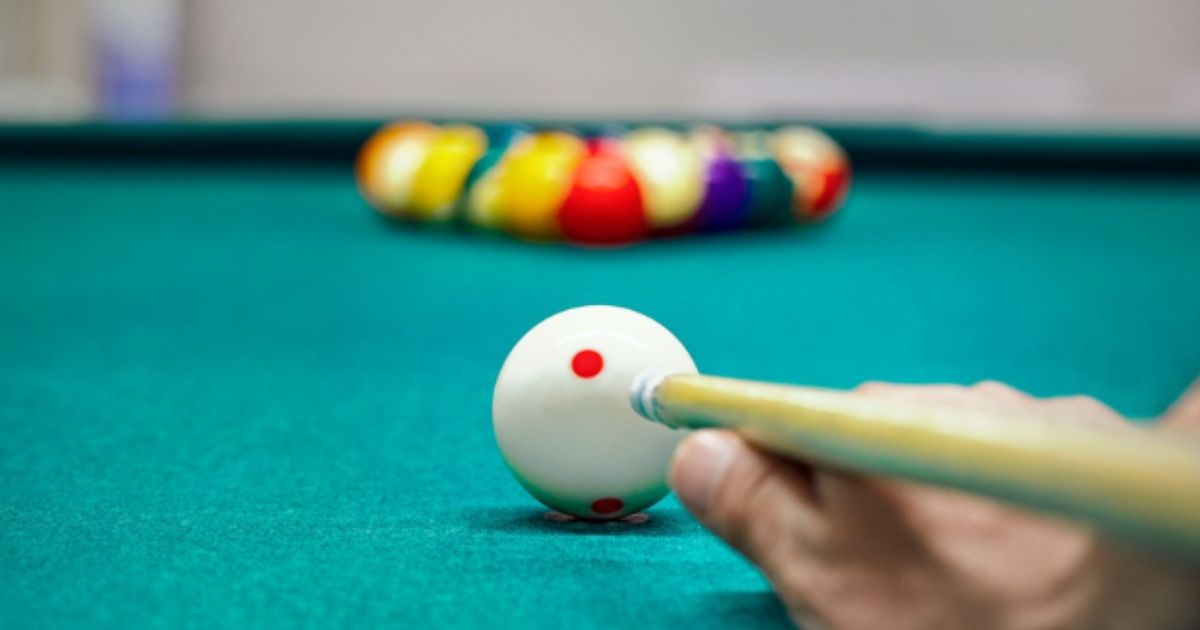
A scratch occurs when the cue ball is pocketed or driven off the table following a stroke. The opponent usually obtains the ball in hand on the entire table or behind the head string as a result of these foul actions. During a valid 8-ball stroke, if the player pockets the cue ball and the 8-ball or drives off the table, the opponent will lose the game.
A scratch can also happen when a player pockets one or more object balls in the same shot as pocketing the cue ball. Based on the game’s regulations, the object balls remain in the pockets and replace the cue ball on the table.
In addition, it is a scratch if the cue ball comes into contact with one of the object balls in a pocket.
We can classify Pool scratch rules into a few different categories.
- 8-ball scratches happen when you pocket the cue ball but fail to do so while attempting to pot the 8-ball. If you pocket the eight-ball as well, you lose. In 8-ball scratch regulations, a scratch is foul, and most rule versions call for an immediate forfeit in these situations. This is only accurate if you pocket the cue ball and the 8-ball in the same shot. Your opponent gets a ball in hand if they pocket the cue ball but the 8-ball isn’t.
- A gameplay scratch occurs when the player pockets the cue ball or sends it off the table during play, not in a break shot. This results in your opponent receiving the ball immediately. In other rule variants, your opponent gets to shoot from behind the head string. These pool scratch rules can keep players from scratching during the game on purpose.
- A break scratch occurs when the cue ball goes into a pocket or jumps off the pool table on the break. If you scratch on the break, your opponent will get the ball in their hands. A break scratch will be considered a forfeit in some rule versions. However, this isn’t very prevalent nowadays, especially in casual games. A breaking cue will aid you in avoiding break scratches.
- A table scratch is a typical pool foul in which no ball is pocketed or knocked off the table. This type of scratch is common when a player misses a shot with their cue ball. It can also happen if the player does not make a shot properly or fails to contact with the cushion. In other words, any illegal shot can cause a table scratch in which the cue ball does not land in a pocket.
- The opponent will obtain a ball in hand due to a table scratch, which will offer them a huge advantage on their next shot. However, certain rule sets stipulate that player must place the first ball in hand below the head string while placing the remaining balls anywhere on the table.
FAQs
What is the 2-shot rule in pool?
The 2-shot rule is available in English 8-ball and blackball pools. You will be allowed two shots after your opponent has made a foul.
What is an illegal shot in pool?
The following are illegal shots in pool:
- Scratch: The player pocketed the cue ball.
- Double hit: the cue tip makes contact with the cue ball two times during a single shot.
- No foot on the floor.
- A ball goes off the table.
- Touch or interfere with balls.
- Scoop shot: the cue tip makes simultaneous contact with the playing surface and the cue ball.
- Push shot: The cue tip makes contact with the cue ball longer than a typical strike.
- Intentional miscue.
Can you hit the cue ball twice?
No, a double hit is an illegal shot in which the cue stick’s tip makes two contacts with the cue ball throughout a single strike. Double grasping the cue ball can result in this foul or the scenarios when almost freezing the cue ball to the object ball or rail.
Is it legal to shoot backward in pool?
Yes ,you can legally shoot the ball in any direction if the cue ball is not in the string. Remember to meet all the criteria for a fair shot. The shot direction is irrelevant.
What is a foul in 9-ball?
A foul in 9-ball is when the player pockets or drives the cue ball off the table. The cue ball is now in the hands of the approaching player, and you can find it anywhere on the table. A foul also occurs if the breaker causes an object ball to jump off the table.
What are fouls in 8-ball?
In the 8-ball pool, a foul occurs when:
- Fail to make a legal shot.
- The cue ball flies off the table or into a pocket.
- Scratch on the break or deflect the cue ball before striking the racked balls are fouls.
- After the cue ball is in position, any forward stroke motion that makes contact with it is either a foul or a legal shot.
- Attempt to shoot while standing with one foot off the ground.
- It is wrong to coach. Every time a team member is called for coaching, the team member shooting will incur a foul.
In general, each pool game has different playing techniques and regulations. Knowing all pool rules can help you be well-prepared for any game. You can also develop better strategies to play and gain more advantage against your opponents. Besides, not limited to any pool game is also a desire of any professional pool player.

Dave Pearson
Dave Pearson, the world's leading pool entertainer, is renowned globally as the ultimate exhibition player.
Boasting 20 world records endorsed by the prestigious Guinness Book of World Records, Dave established a legendary history in the sport industry.
